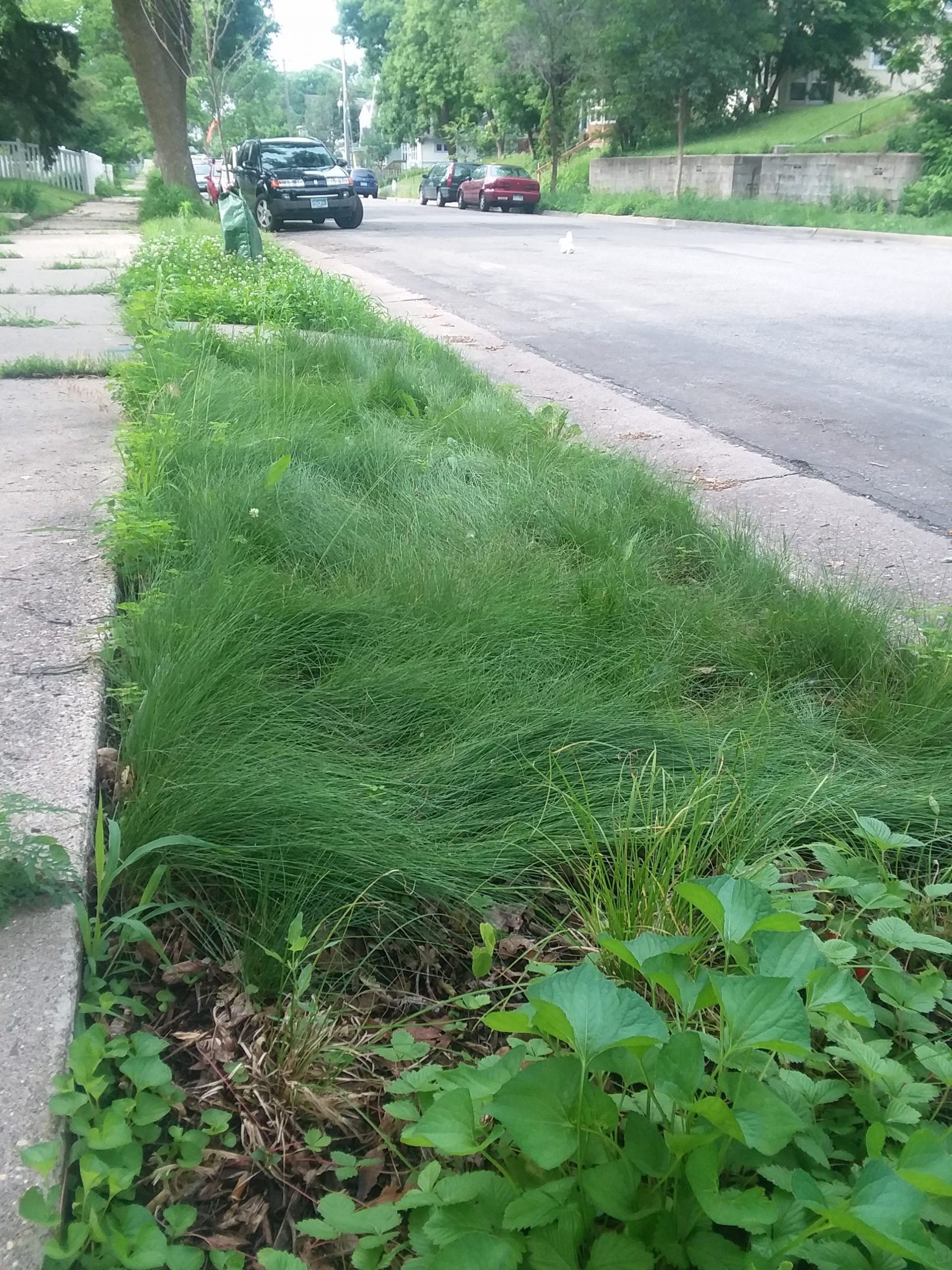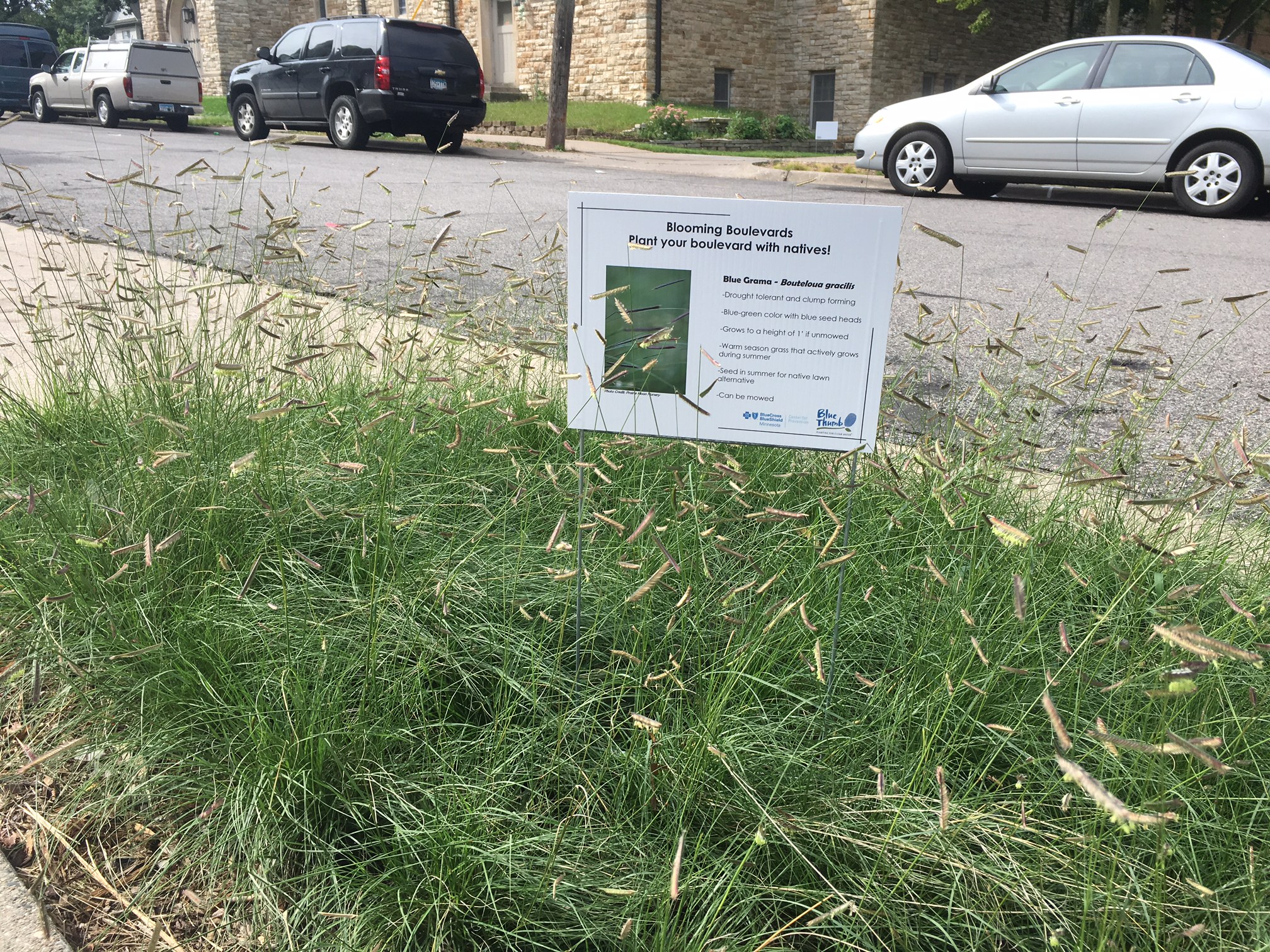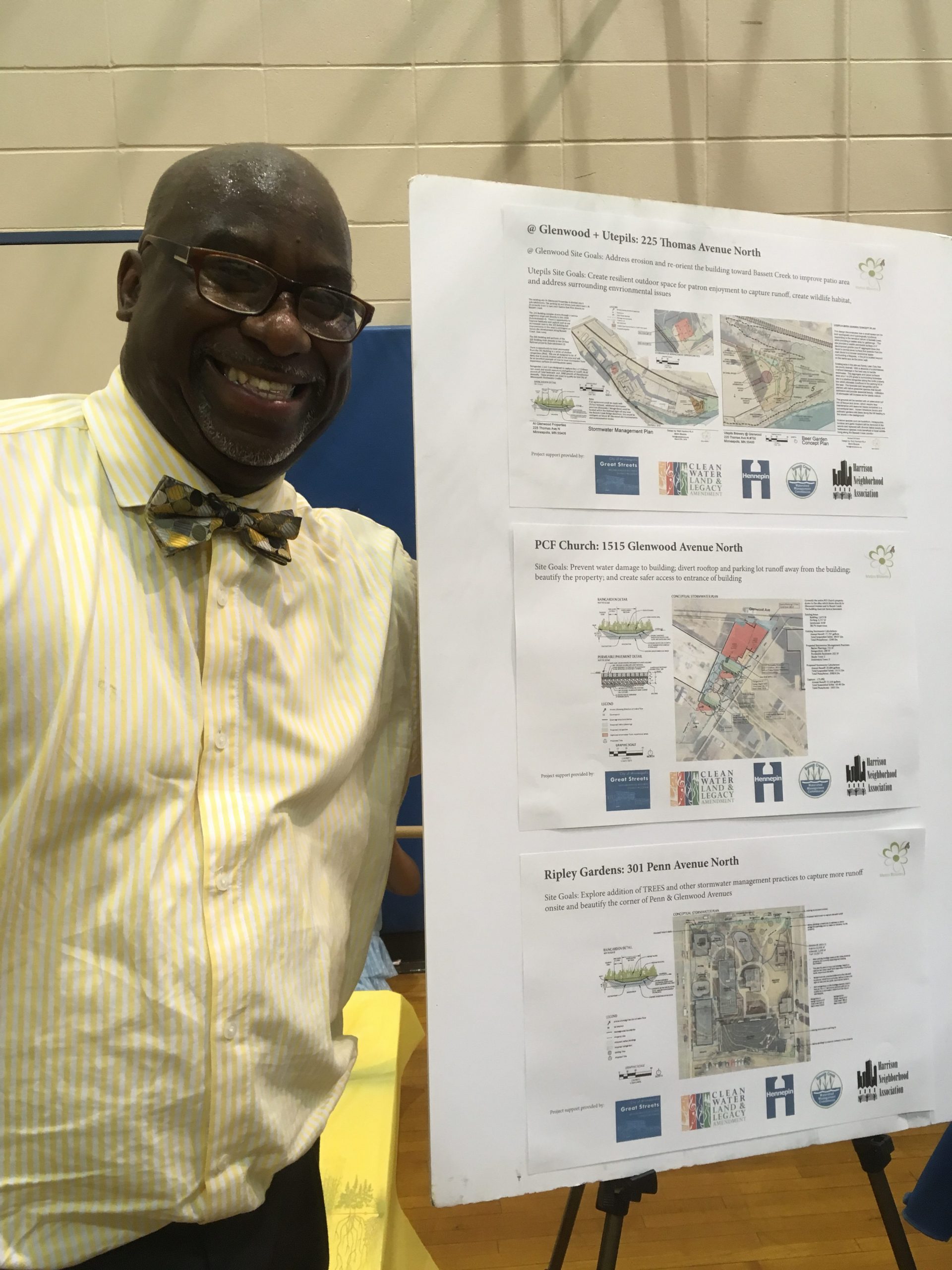 If Metro Blooms were a vehicle (green energy-powered, of course), the community would be the driver. The destination is always the same: clean water, habitat and a more beautiful environment. But it is a community’s residents, businesses and local institutions that decide how the journey is taken.
If Metro Blooms were a vehicle (green energy-powered, of course), the community would be the driver. The destination is always the same: clean water, habitat and a more beautiful environment. But it is a community’s residents, businesses and local institutions that decide how the journey is taken.
As a non-profit that specializes in ecological landscaping, Metro Blooms uses green infrastructure, such as raingardens, bioswales and permeable pavement, to address stormwater runoff, one of the major sources of pollution in lakes and streams. Metro Blooms also works to promote environmental justice, working in communities to leverage and enhance existing assets, and working with their residents to improve livability, build resilience and promote equity where they live.
The Harrison neighborhood is a racially diverse, richly multi-ethnic community just west of downtown Minneapolis. The neighborhood is characterized by deeply-rooted homeowners and long-time renters who enjoy community gardens and the community bread oven. It is close to Theodore Wirth Park, while Bassett Creek, which feeds into the Mississippi River, runs along its southern edge. It is also a low-wealth community, with a median household income of $32,000, about one-third of that found in nearby North Loop, a trendy area of upscale homes and restaurants.
Harrison has suffered a history of environmental misuse. Oil and chemical companies located in its industrial area left a legacy of pollution, earning designation as some of the most polluted sites in the state. Bassett Creek and Mississippi River are both on the state’s list of impaired bodies of water.
Metro Blooms has been working in the neighborhood to help protect these water resources by preventing runoff, and is now in the third phase of the Northside Neighborhood Engagement & Opportunities in Clean Water Initiatives (NNEOCWI) project. Initially a demonstration project to capture runoff in Redeemer Lutheran Church’s boulevards, it grew into a large-scale effort to transform boulevards along residential streets into green infrastructure. Now Metro Blooms is partnering with business and institutional properties on similar initiatives.
In the Beginning
In 2016, as part of citywide efforts to address the emerald ash borer beetle, the city was planning to cut down ash trees on Harrison boulevards. Underneath the trees, the ground was raised and hard-packed, and rain and melting snow ran off of it into storm sewers that emptied the polluted water into Bassett Creek. Partnering with Redeemer Lutheran Church, the Harrison Neighborhood Association (HNA), and the Center for Prevention at BlueCross BlueShield, Metro Blooms turned the boulevards into slight depressions called bioswales, planting them with hardy, deep-rooted plants and grasses chosen with an eye to attracting pollinators. Instead of running off, water now soaked into the swales, to be taken up by the plants or cleaned and cooled as it filtered deep into the earth, while the plants themselves provided forage for bees, butterflies and other wildlife.
Blooming Boulevards
The project expanded in 2017, with large support from the Metropolitan Council, the Bassett Creek Watershed Management Commission (BCWMC), and Hennepin County Green Partners, among others. Volunteer boulevard captains were recruited to promote bioswales that would be planted with pollinator-friendly grasses and low-growing wildflowers such as strawberries and violets. Eligible residents could have a bioswale installed if they were willing to maintain the site, and were offered future opportunities to learn how to do that. The project also provided jobs, a priority for the HNA; Metro Blooms hired and trained local youth and adult crews to do much of the work.
By the end of the summer, more than 10,000 sq. ft. of pollinator and clean-water habitat had been planted. The bioswales had several functions: capturing stormwater, providing habitat for pollinators, and beautifying the landscape, which improved the livability of the neighborhood. Also, the plants, many of them native, were chosen for their resilience to extreme weather events such as major downpours or drought, which are becoming more frequent in our region.
Metro Blooms is now planning similar projects in the Glenwood business district. This program offers commercial and institutional properties grants that pay a large share of the cost of stormwater management strategies that will also beautify the business district. HNA and the Glenwood Revitalization Team, which promotes economic development, have talked to local businesses about the program, and so far six have plans to make changes. Similar to Blooming Boulevards, this program receives support from local and state funding sources, including the city’s Great Streets program, Hennepin County, the BCWMC, and the Clean Water Fund.
“It’s a great opportunity for the businesses,” said HNA executive director Dave Colling. He predicted a large increase in traffic in the corridor with the coming of the light rail and rapid-transit bus service, and saw this work as an investment for the future.
 Seeking feedback from the community, Metro Blooms set up a table at HNA’s annual meeting in May to display the plans for the commercial properties, which include a bike shop, a store, breweries, a housing development and a church, the Proverbs Christian Fellowship (PCF).
Seeking feedback from the community, Metro Blooms set up a table at HNA’s annual meeting in May to display the plans for the commercial properties, which include a bike shop, a store, breweries, a housing development and a church, the Proverbs Christian Fellowship (PCF).
Senior Pastor Darrell Gillespie stopped by to look at plans for his church. They included redirecting runoff from the building using raingardens, native plantings and permeable pavement. These functional elements of green infrastructure will provide tangible benefits, but Pastor Gillespie saw a potentially greater impact. He views the project as contributing to the health of the community. He also mentioned that the church has to clean up garbage and old tires that people leave on the property, and predicted that when the work is done people will show more respect.
He is looking forward to implementation and installation. “It’s going to look way better!” he said.
– Aleli Balagtas, Metro Blooms Reporter
